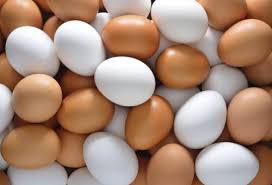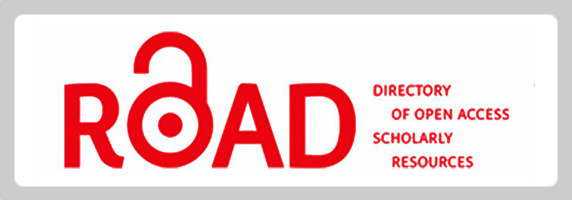Impact of Phytase Enzyme Usage on Performance and Egg Quality of laying hens
Abstract
This experiment was carried out to identify the effects of the inclusion of different levels of phytase enzyme in laying hen’s diets, on performance and egg quality. Hundred commercial layer hens (Lohmann) breeds at 32 weeks of age were distributed in a completely randomized design with four dietary treatment groups of twenty-five hens each. The treatments included 250, 500, and 750 gm phytase enzyme/ton feed respectively. Each treatment was divided into 5 replicates of 5 birds each. The replicate in the study was represented by battery cage (length 47cm, width 40cm, and height 47cm). All experimental diets were formulated according to the guidelines given in the manual provided by the breeder company. The performance and egg quality parameters were recorded. Results revealed that all performance parameters were significantly affected by dietary treatments except egg weight which was not influenced by treatments. No significant differences were observed in egg quality of all treatment groups, except for (shape index, albumin weight, yolk diameter, and Haugh unit). It is concluded that adding phytase enzyme at 750 g ⁄ ton, in diets of layer hens can improve feed intake, egg production, and feed conversion ratio.
Downloads
References
Augspurger NR, Webel DM, Baker DH (2007). An Escherichia coli phytase expressed in yeast effectively replaces inorganic phosphorus for finishing pigs and laying hens. Asian Journal of Animal Science. 85(5):1192-8. https://doi.org/10.2527/jas.2006-340
Boling, S.D., M.W. Douglas, M.L. Johnson, X. Wang, C.M. Parsons, K.W. Koelkebeck and R.A. Zimmermant. (2000). The effect of dietary levels of available phosphorus and phytase on performance of young and older laying hens. Poultry. Science. 79: 224-230. https://doi.org/10.1093/ps/79.2.224
Ciftic, M. Bestami, D. and Azman, A. A. (2005). Effects of Microbial phytase supplementation on feed consumption and egg production of laying hens. International journal of Poultry Science. 4(10):758-760. https://doi.org/10.3923/ijps.2005.758.760
Daffa alla AA, Mukhtar, A. M. and Mohamed K.A. (2015). Effect of feeding full fat safflower seed with and without enzyme on the performance and carcass characteristics of broiler chicks. International Journal of Phytopharmacology 6, 1:36-41.
Francesch, M., J. Broz and J. Brufau. (2005). Effects of an experimental phytase on performance, egg quality, tibia ash content and phosphorus bioavailability in laying hens fed on maize- or barley-based diets. Br. Poultry. Science. 46: 340-348. https://doi.org/10.1080/00071660500127001
Hassanien, H. and Sanaa.H.M.ELnagar, (2011).Comparison difference levels of phytase enzyme supplementation on laying hen performance, egg quality and some blood parameters. Asian Journal of Poultry Science 5(2):77-85. https://doi.org/10.3923/ajpsaj.2011.77.85
Jalal, M.A. and S.E. Scheideler. (2001). Effect of supplementation of two different sources of phytase on egg production parameters in laying hens and nutrient digestibility. Poultry. Science. 80: 1463-1471. https://doi.org/10.1093/ps/80.10.1463
Jong Hyuk Kim, Franco Martinez Pitargue, Hyunjung Jung, Gi Ppeum Han Hyeon Seok Choi, and Dong Yong Kil. (2017). Effect of superdosing phytase on productive performance and egg quality in laying hens. Asian-Australasian Journal of Animal Sciences. Vol. 30, No. 7:994-998. https://doi.org/10.5713/ajas.17.0149
Ingrid Y. Martinez Rojas, C. López Coello E. Ávila González J. Arce Menocal (2018). Effect of phytase dose on productive performance and bone status of layers fed with graded levels of digestible lysine. Veterinaria México OA vol.5 no.3 México Jul. / Sep. https://doi.org/10.22201/fmvz.24486760e.2018.3.564
Keshavarz, K. (2003). The effect of different levels of non phytate phosphorus with and without phytase on the performance of four strains of laying hens. Poultry. Science. 82: 71-91. https://doi.org/10.1093/ps/82.1.71
Lan, G.Q., N. Abdallah, S. Jalaludin and Y.W. Ho. (2002). Efficacy of supplementation of phytase producing bacterial culture on the performance and nutrient use of broiler chickens fed corn soybean meal diets. Poultry. Science. 81: 1522-1532. https://doi.org/10.1093/ps/81.10.1522
Lim, H.S., H. Namkung and I.K. Paik. (2003). Effects of phytase supplementation on the performance, egg quality and phosphorous excretion of laying hens fed different levels of dietary calcium and non phytate phosphorous. Poultry. Science. 82: 92-99. https://doi.org/10.1093/ps/82.1.92
Mellef J, Dridi A, Agrebi A, Belhaj O (2011). Effets de l'ajout de phytase dans la ration alimentaire sur les performances de ponte des poules pondeuses. R Med Vet.; 162(6):304
Meyer E and Parsons C. (2011). The efficacy of a phytase enzyme fed to Hy-Line W-36 laying hens from 32 to 62 weeks of age. The Journal of Applied Poultry Research. 2011;20(2):136-42. https://doi.org/10.3382/japr.2010-00212
Narahari, D. and I.A. Jayaprasad. (2001). Effect of replacement of non-phytate phosphorus and phytase supplementation on layers performance. Indian Journal Animal. Science. 71: 491-492.
NRC. (1994). Nutrient Requirements of Poultry. 9th Edn. National Academy Press, Washington, DC. USA. ISBN-13: 9780309048927, Pages: 155.
Plumstead, P.W. (2007). Strategies to reduce fecal phosphorus excretion in the broiler industry without affecting performance. Ph.D. Thesis, North Carolina State University.
SAS, (2003). User's Guide: Statistics. 9.1 ed. Cary, NC. SAS Institute Inc.
Scott, T.A., R.Kampen and F.G.Silversides. (1999). The effect of phosphorus, phytase enzyme and calcium on the performance of layers fed corn.based diets.poultryScience. 78:1742.1749. https://doi.org/10.1093/ps/78.12.1742
Silversides FG, Scott TA, Korver DR, Afsharmanesh M, Hruby M (2006). A Study on the interaction of xylanase and phytase enzymes in wheat-based diets fed to commercial white and brown egg laying hens 1. Poultry Science.;85 (2):297-305. https://doi.org/10.1093/ps/85.2.297
Steel, R.G., Torrie, J.H. (1980). Principles and Procedures of Statistics: Abiometric Approach. McGraw-Hill Book, New York.
Viveros, A., C. Centeno, A. Brenes, R. Canales and A. Lozano (2000). Phytase and acid phosphatase activities in plant feedstuffs. Journal of Agricltural Food Chemistry, 48: 4009-4013. https://doi.org/10.1021/jf991126m











